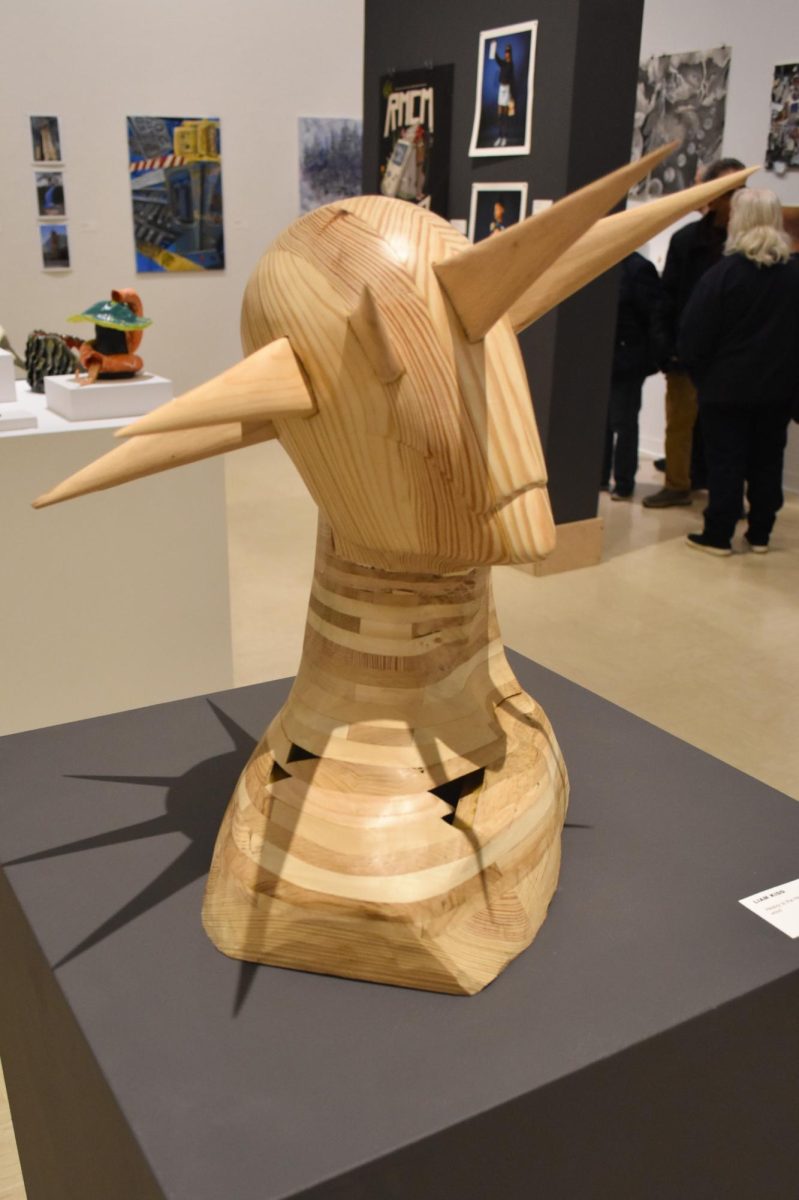A more unique type of artist than the usual lecturer visited EJ Thomas’ Stage Door last Wednesday.
Although her name may not be familiar due to the behind-the-scenes nature of her work, Francoise Mouly, the art director of the New Yorker since 1993, has been one of the biggest influences on the contemporary world of illustration, cartooning and how the media visually portrays news stories and American life.
Her job, which she describes as the “best job in the world,” consists of meeting with and commissioning artists for illustrations, looking at all of the material that artists send in (ideas, sketches and finished drawings) and ultimately deciding which illustrations will run in the magazine.
Mouly grew up in Paris, where her father wanted her to become a plastic surgeon. She moved to New York City and studied architecture instead, which is where she met Art Spiegelman, an artist whom she would later marry.
Mouly began to become more involved in the world of fine art, cartooning and printmaking. She worked at RAW magazine for a number of years, determined to create a “complex printed object,” according to Mouly, and through this, she met a number of fine artists.
In 1993, Mouly became the editor of The New Yorker, a popular American magazine compiled of reports, essays, fiction, satire and, of course, cartoons.
From the famous covers to the inside material, Mouly has been the woman behind some of the most prominent illustrations that Americans have seen.
When Mouly began to study the old New Yorker covers, she found a “treasure trove of visual narratives,” she said, and a glimpse at what sophisticates were laughing about in the past. Thus, she works to choose images that will continue this visual narrative, and will continue to raise questions about contemporary issues.
For example, on June 13, 1994, Mouly ran a cover of two men in front of a wedding cake: an image that was perceived as very shocking for the time. Historians later said that this cover showed that gay marriage could be possible.
One of her most challenging covers was the 9/11 issue. Mouly was torn: she didn’t believe that any drawn image could adequately express the moment when the towers fell, but she felt that using a photo would show defeat (The New Yorker is famous for never including photography.)
Finally, they came up with the perfect cover: an almost all-black page, with the towers faintly showing in a darker black. Mouly continues to show how very little can say quite a lot.
Mouly’s lecture undoubtedly left many Akron students and faculty in awe of the true power of illustration.
“Mouly had a fresh perspective, and I enjoyed seeing the covers,” said sophomore graphic design student Lauren McAndres. “I liked that she brought the artists she featured in RAW magazine, and had them do covers for the New Yorker.”
Mouly also gave a conversation-based lecture this last Thursday morning with students at the Myer’s School of Art.
During this group discussion, much was said on the value of the printed image. Artists are worried that with the advent of computers as one of our main ways to consume images, the physically printed image will soon be obsolete.
Yet, people such as Francoise Mouly are working to keep this alive by making tangible, exciting, printed works.















